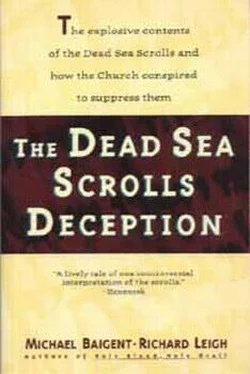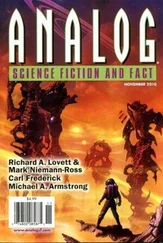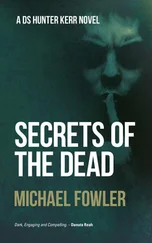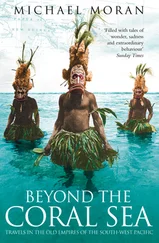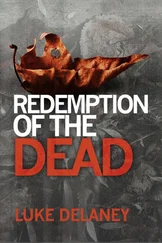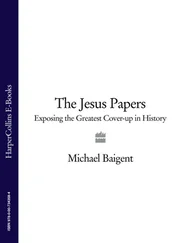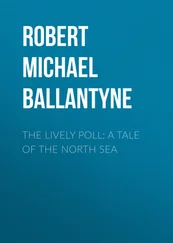It was certainly convenient for de Vaux that until 1967 the Rockefeller Museum lay in the Jordanian territory of East Jerusalem. Israelis were forbidden to cross into the sector, and this provided the anti-Semitic de Vaux with a handy pretext to exclude Israeli experts, even though his team of international scholars was supposed, at least theoretically, to reflect the widest diversity of interests and approaches. If politics kept the Israelis out of East Jerusalem, they could easily have been provided with photographs, or with some other access to the material. No such access was granted.
We raised the issue with Professor Biran, governor of the Israeli sector of Jerusalem at the time and subsequently director of the Israeli Department of Antiquities. He stated that the Jordanian authorities had been adamant in refusing to let Sukenik, or any other Israeli scholar, enter their sector of Jerusalem. In his capacity of governor, Biran had replied by authorising de Vaux’s committee to meet in the Israeli sector and offering them safe conducts. The offer was refused. Biran then suggested that individual scrolls or fragments be brought over, to be examined by Israeli experts. This suggestion was similarly rejected. ‘Of course they could have come,’ Professor Biran concluded, ‘but they felt that they had possession [of the scrolls] and would not let anyone else take them.’ 8In the existing political climate, the scrolls were a fairly low priority, and no official pressure was brought to bear on this academic intransigence.
The situation was rendered even more absurd by the fact that the Israelis, first at Hebrew University and then at the specially created Shrine of the Book, had seven important scrolls of their own — the three originally purchased by Sukenik, and the four Yigael Yadin managed to purchase in New York. The Israelis seem to have pursued and published their research more or less responsibly — they were, after all, accountable to Yadin and Biran, to the government, to public opinion and the academic world in general. But the team at the Rockefeller emerge in a rather less favourable light. Funded by substantial donations, enjoying time, leisure and freedom, they convey the impression of an exclusive club, a self-proclaimed elite, almost medieval in their attitude to, and their monopolisation of, the material. The ‘Scrollery’ in which they conducted their research has a quasi-monastic atmosphere about it. One is reminded again of the sequestration of learning in The Name of the Rose. And the ‘experts’ granted access to the ‘Scrollery’ arrogated such power and prestige to themselves that outsiders were easily convinced of the justness of their attitude. As Professor James B. Robinson (director of another, more responsible, team which translated the texts found in the Egyptian desert at Nag Hammadi) said to us: ‘Manuscript discoveries bring out the worst instincts in otherwise normal scholars.’ 9
If the international team were high-handed in monopolising their material, they were no less so in interpreting it. In 1954, just when the team were beginning their work, the dangers had already been anticipated, by a Jesuit scholar, Robert North:
Regarding the date of the scrolls, or rather the triple date of their composition, transcription, and storage, there has recently attained a relative consensus which is both reassuring and disquieting. It is reassuring insofar as it proceeds from such a variety of converging lines of evidence, and provides a ‘working hypothesis’ as basis of discussion. But there is danger of a false security. It is important to emphasize the frailty of the evidences themselves… 10
North’s warnings were to be ignored. During the course of the subsequent decade, a ‘consensus’ view — to use his term and Robert Eisenman’s — was indeed to emerge, or be imposed, by the international team working under de Vaux at the Rockefeller. A rigid orthodoxy of interpretation evolved, from which any deviation was tantamount to heresy.
This orthodoxy of interpretation, which grew progressively more dogmatic over the years, was enunciated in its entirety by Father Milik and published in France in 1957 under the title Dix ans de découvertes dans le désert de Juda. Two years later, Milik’s work was to be translated into English by another member of de Vaux’s international team, John Strugnell. By that time, the first English formulation of the consensus view had already appeared – The Ancient Library of Qumran, by Professor Frank Cross, Strugnell’s mentor, in 1958. The consensus view was summarised and given its final polishing touches by Father De Vaux himself in a series of lectures given to the British Academy in 1959 and published in 1961 as L’archéologie et les manuscrits de la Mer Morte. By then, its tenets were soundly entrenched. Anyone who presumed to challenge them did so at severe risk to his credibility.
In 1971, on Father De Vaux’s death, an extraordinary situation developed. Although he did not in any legal sense own the scrolls, he nevertheless bequeathed his rights to them to one of his colleagues, Father Pierre Benoit, another Dominican and subsequently de Vaux’s successor as head of the international team and of the Ecole Biblique. For Father Benoit actually to inherit de Vaux’s rights, privileges and prerogatives of access and control was, as a scholastic procedure, unprecedented. From a legal point of view, it was, to say the least, extremely irregular. More extraordinary still, however, the scholarly world did not contest this ‘transaction’. When we asked Professor Norman Golb of the University of Chicago why so dubious a procedure was allowed to occur, he replied that opposing it would have been ‘a lost cause’. 11
With de Vaux’s behaviour as a precedent, other members of his team followed suit. Thus, for example, when Father Patrick Skehan died in 1980, he bequeathed rights to the scrolls in his custody to Professor Eugene Ulrich of Notre Dame University, Indiana. The scrolls that had been the preserve of Father Jean Starcky were similarly bequeathed — or, more euphemistically, ‘reassigned’ — to Father Emile Puech of the Ecole Biblique. Thus the Catholic scholars at the core of the international team maintained their monopoly and control, and the consensus remained unchallenged. Not until 1987, on the death of Father Benoit, were their methods to be contested.
When Father Benoit died, Professor John Strugnell was designated his successor as head of the international team. Born in Barnet, north London, in 1930, Strugnell received his BA in 1952 and his MA in 1955, both from Jesus College, Oxford. Although admitted to the PhD programme at Oxford’s Faculty of Oriental Studies, he never completed his doctorate, and his candidature lapsed in 1958. In he had been admitted to de Vaux’s team, had gone to Jerusalem and remained there for two years. In 1957, after a brief stint at the Oriental Institute of the University of Chicago, he returned to Jerusalem, becoming affiliated with the Rockefeller Museum where he worked as epigraphist until 1960. In that year, he was appointed Assistant Professor of Old Testament Studies at Duke University’s Divinity School. In 1968, he moved to Harvard Divinity School as Professor of Christian Origins.
Strugnell’s appointment as head of the international team was not entirely unimpeded. Since 1967, the Israeli government had been legally authorised to ratify all such appointments. In Father Benoit’s case, the Israelis hadn’t bothered to exercise their authority. In Strugnell’s, for the first time, they asserted their own rights over the material. According to Professor Shemaryahu Talmon, a member of the committee that vetted Strugnell, his appointment was not ratified until certain conditions were met. 12Among other things, the Israelis were troubled by the way in which certain members of the international team tended to play the role of ‘absentee landlord’. Since the 1967 war, for example, Father Starcky had refused to set foot in Israel. Father Milik, de Vaux’s closest confidant and protege, had for many years lived in Paris, with photographs of some of the most vital scroll material, to which he alone has access. No one else is allowed to make photographs. Without Milik’s consent, no one, not even on the international team, is allowed to publish on the material of which he has custody. To our knowledge, he has never, since the 1967 war, returned to Jerusalem to work on this material. Time Magazine describes him as ‘elusive’. 13Another publication, Biblical Archaeology Review (BAR), has twice reported that he refuses even to answer letters from the Israeli Department of Antiquities. 14He has treated both other scholars and the general public with what can only be described as disdain.
Читать дальше
